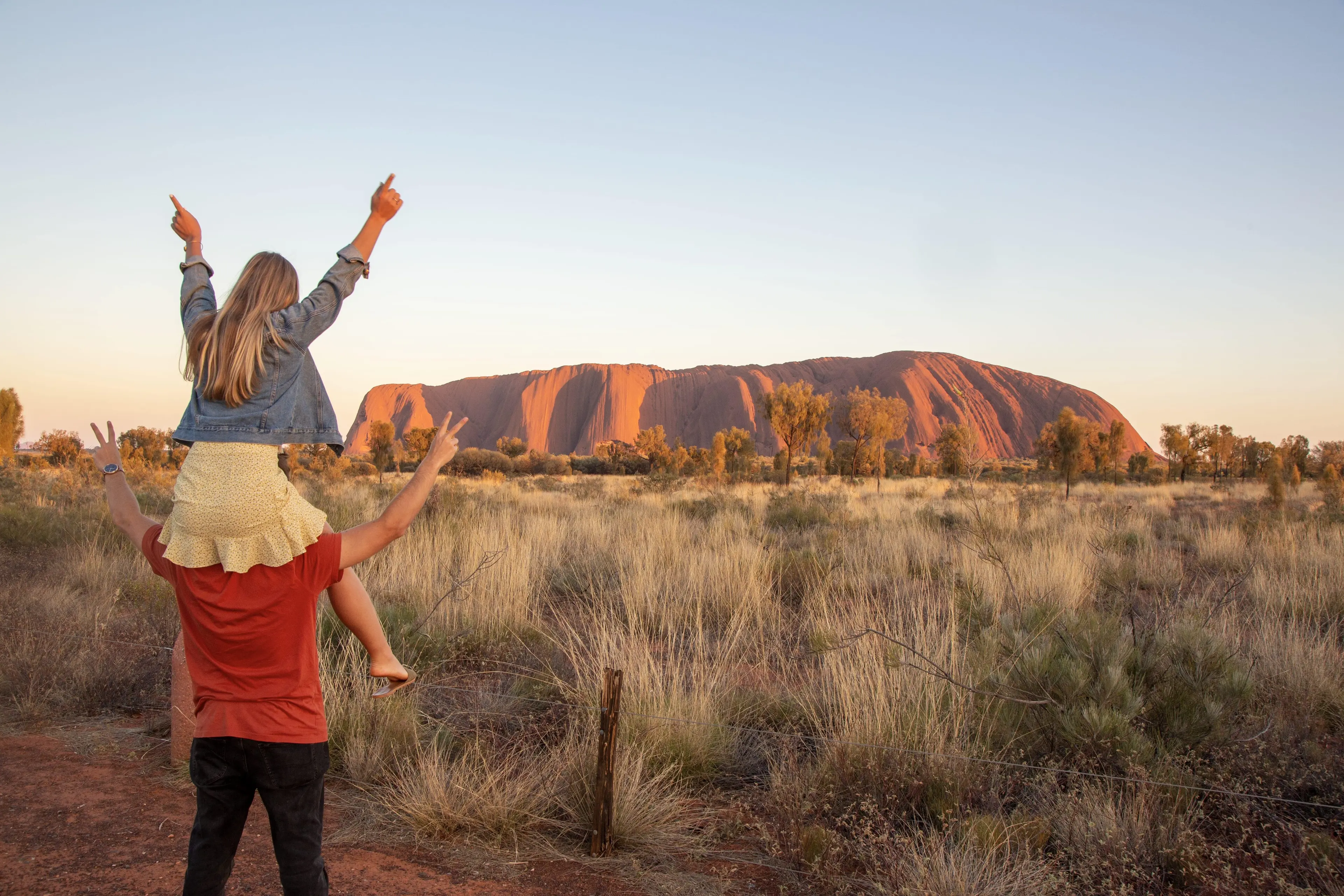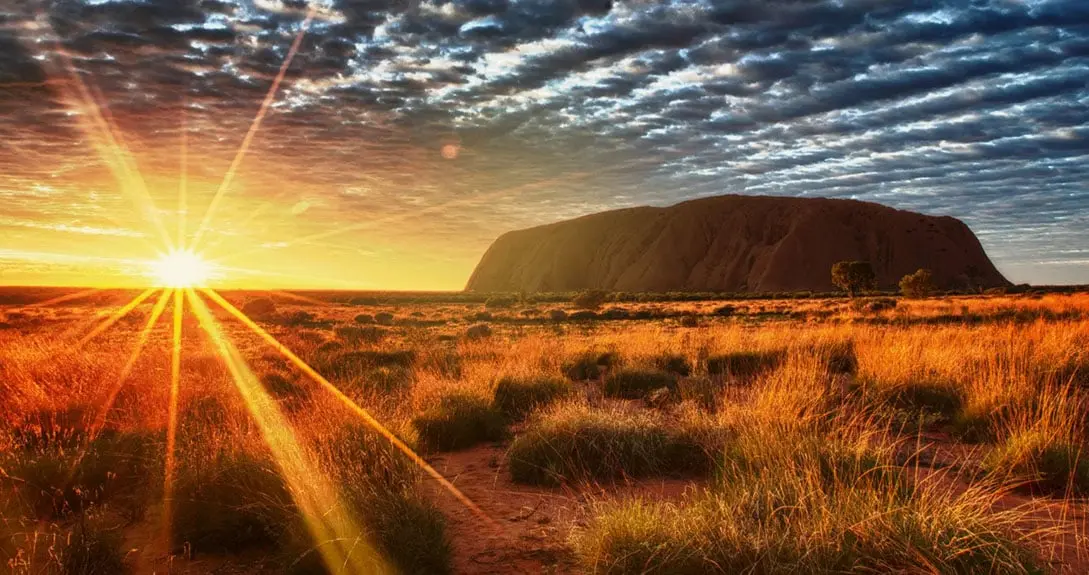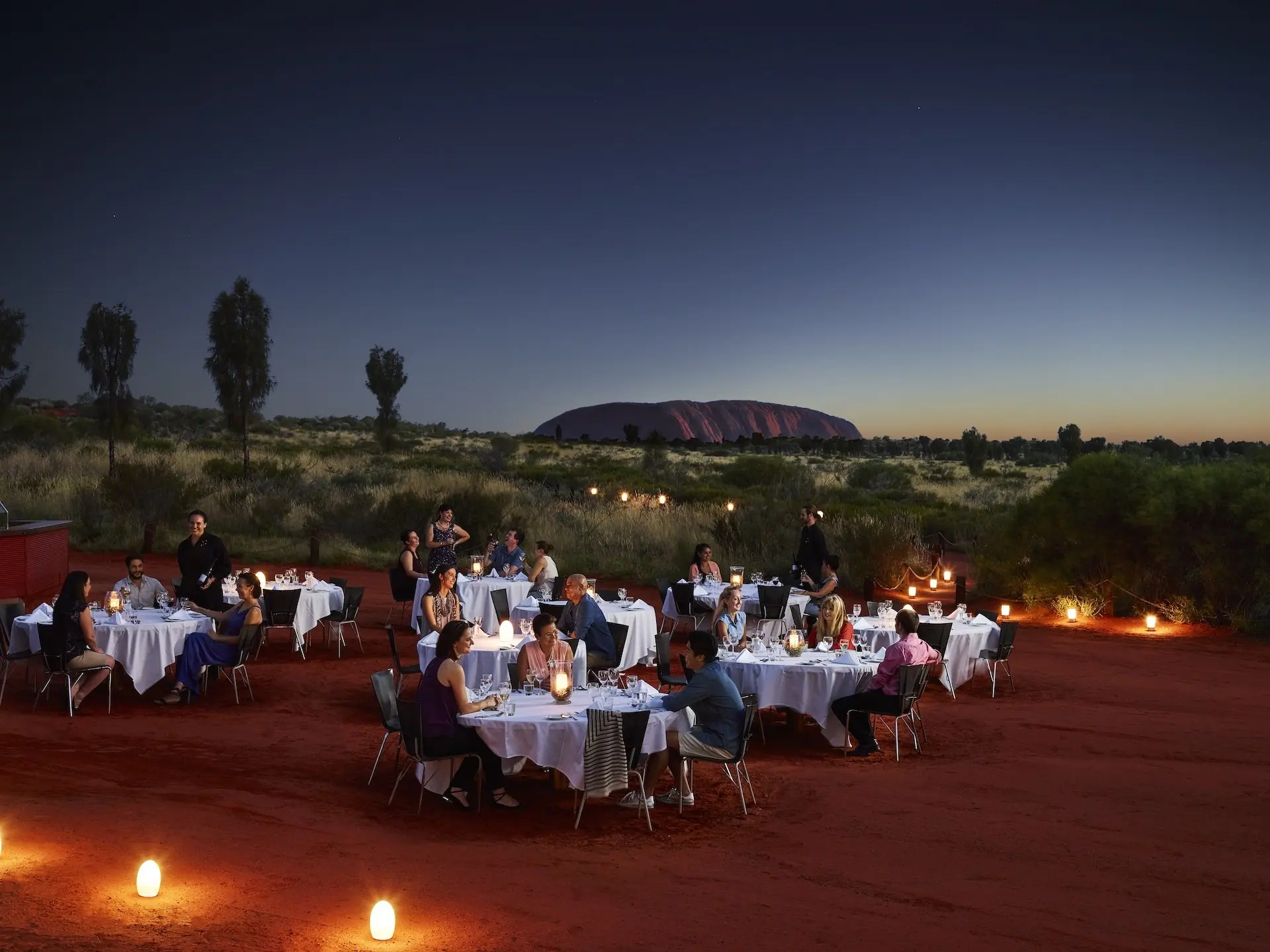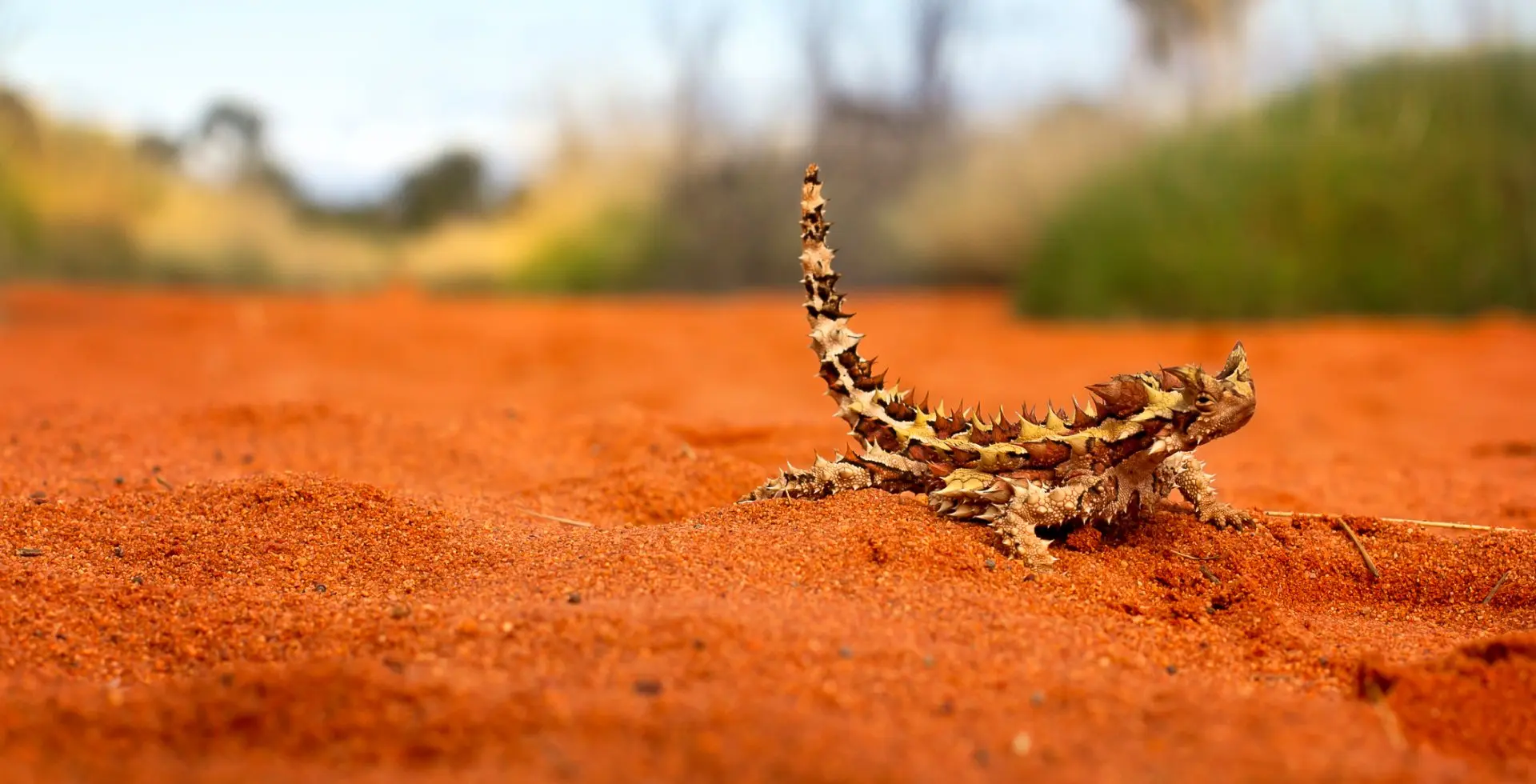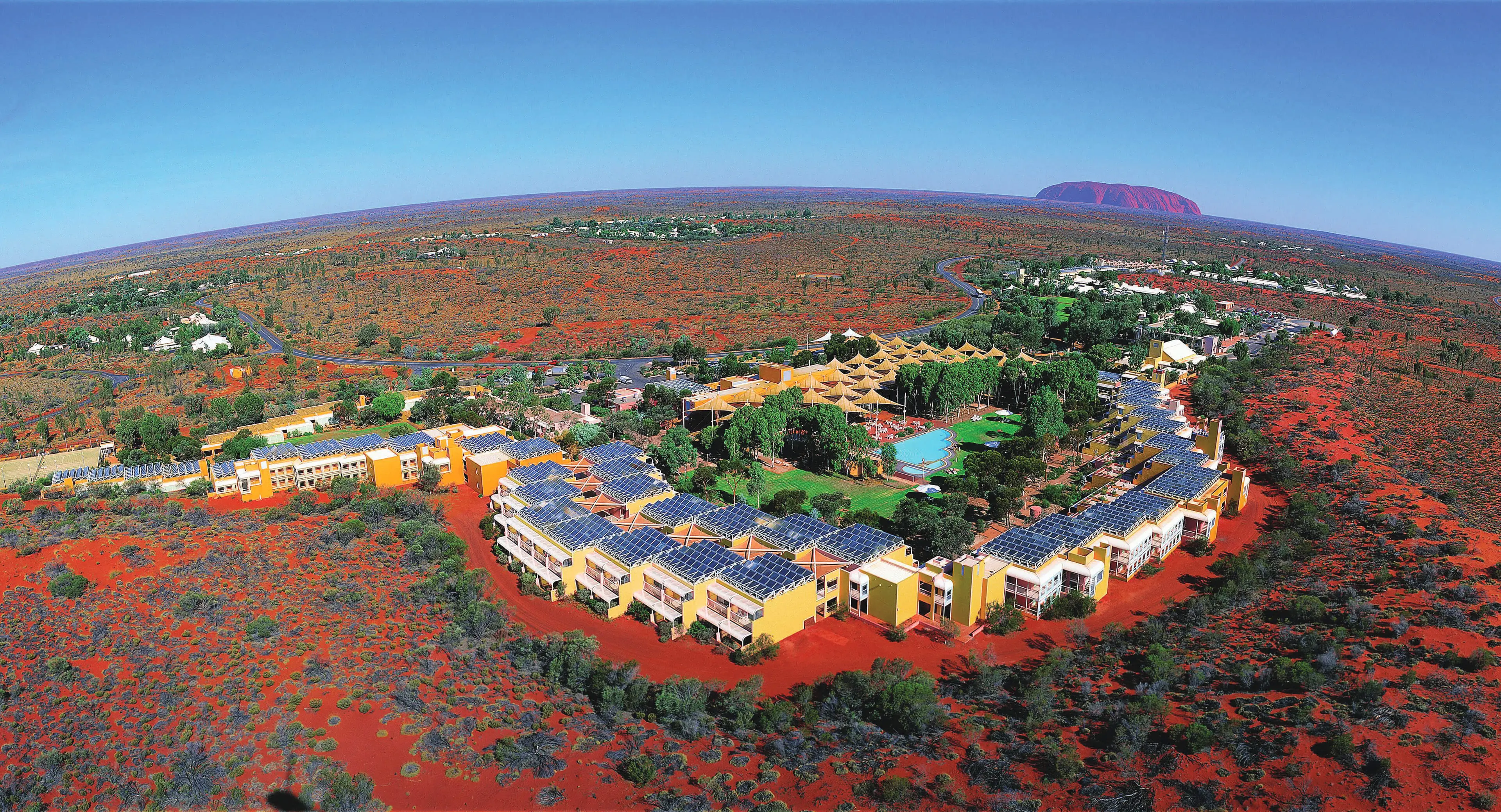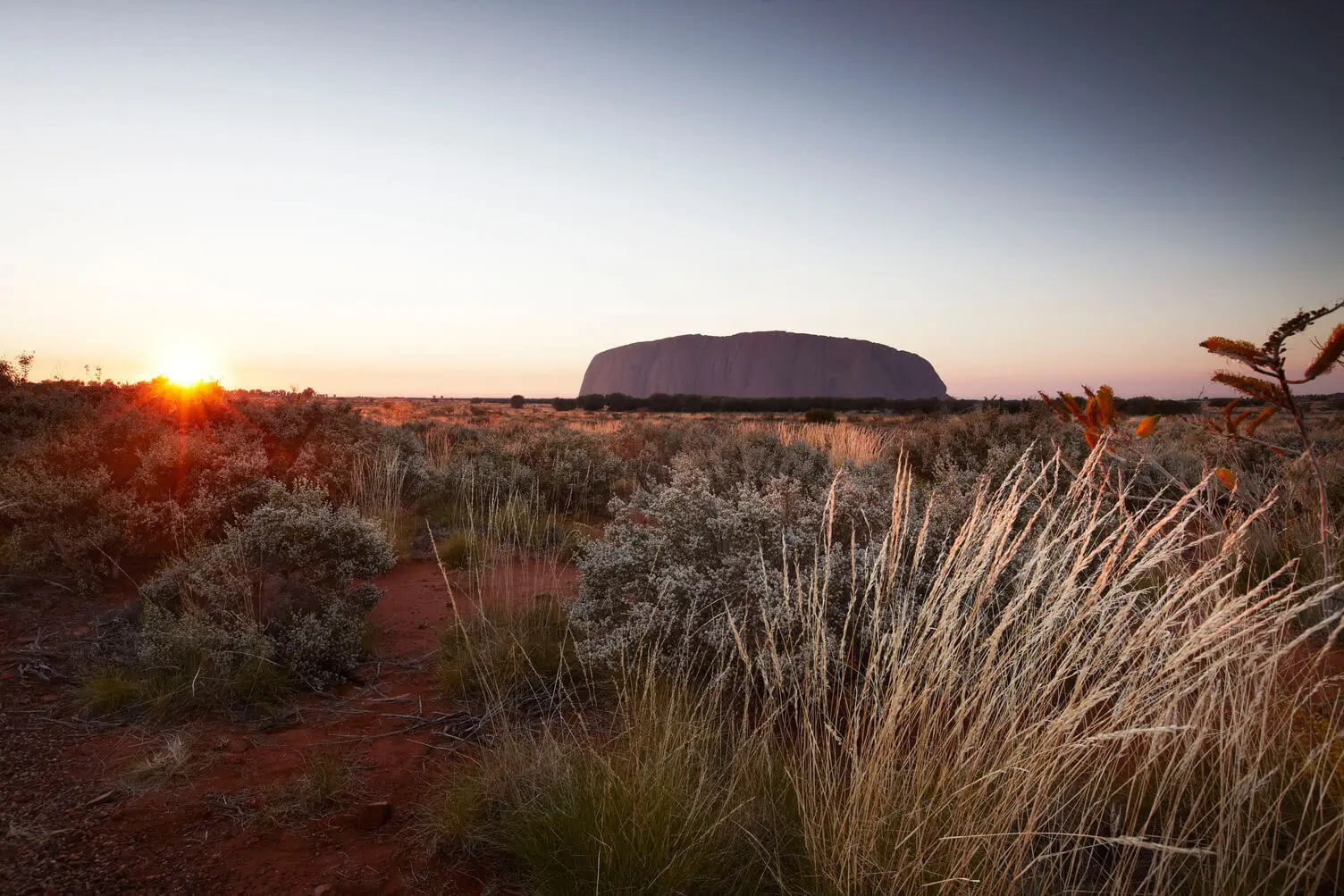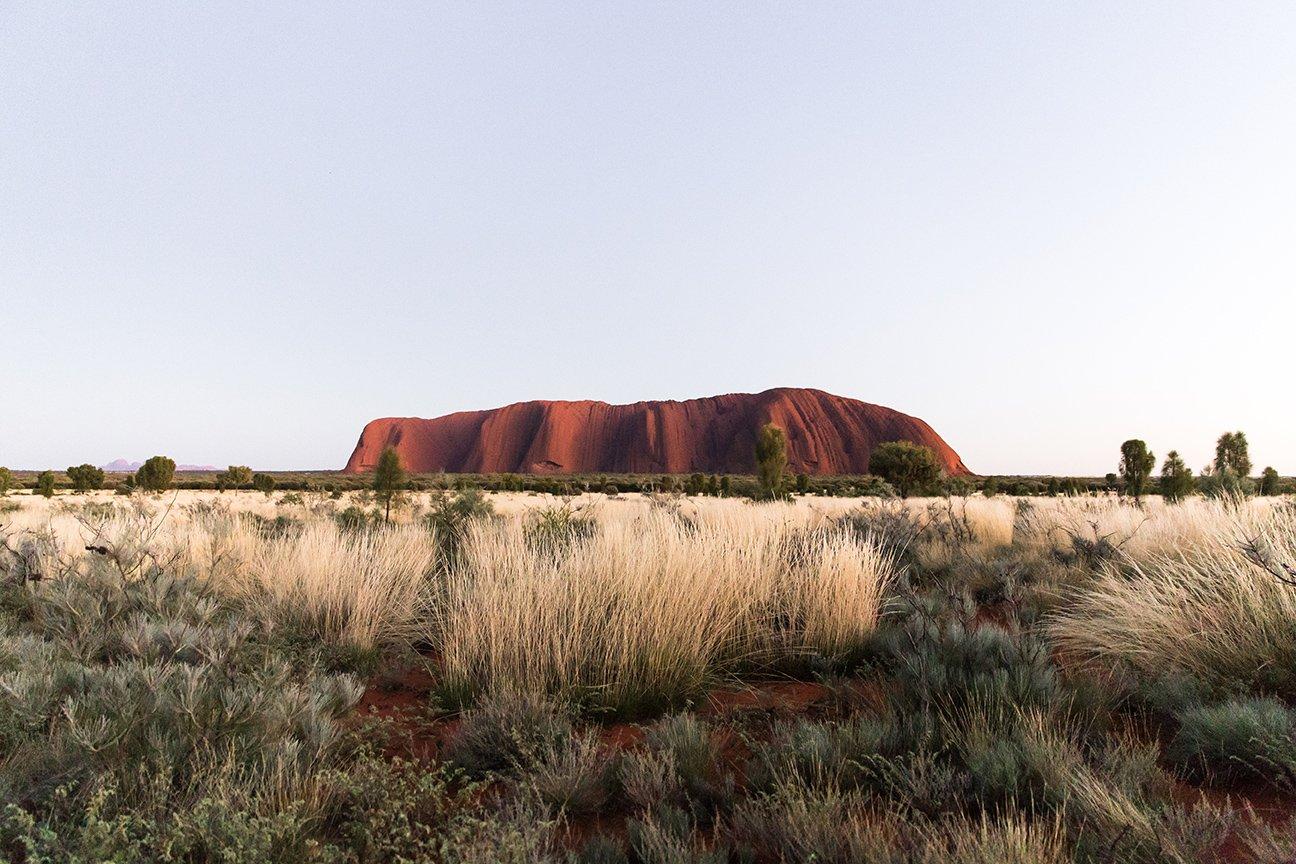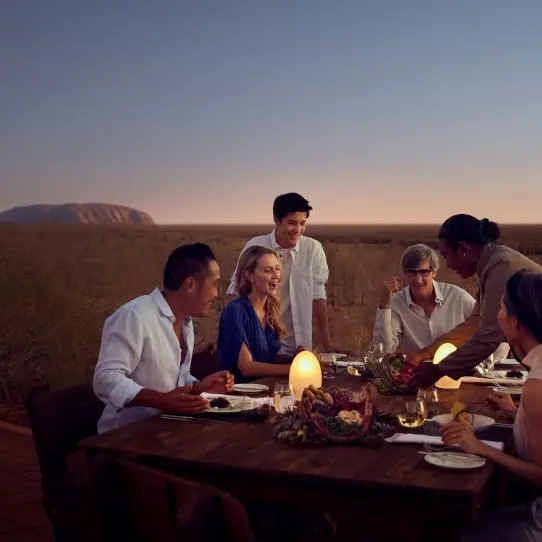A First Timer's Guide to Uluru
Visiting Uluru for the first time? Check out our guide to everything you need to know about this marvelous monolith, as well as tips for making the most of your stay here in Australia’s Red Centre.
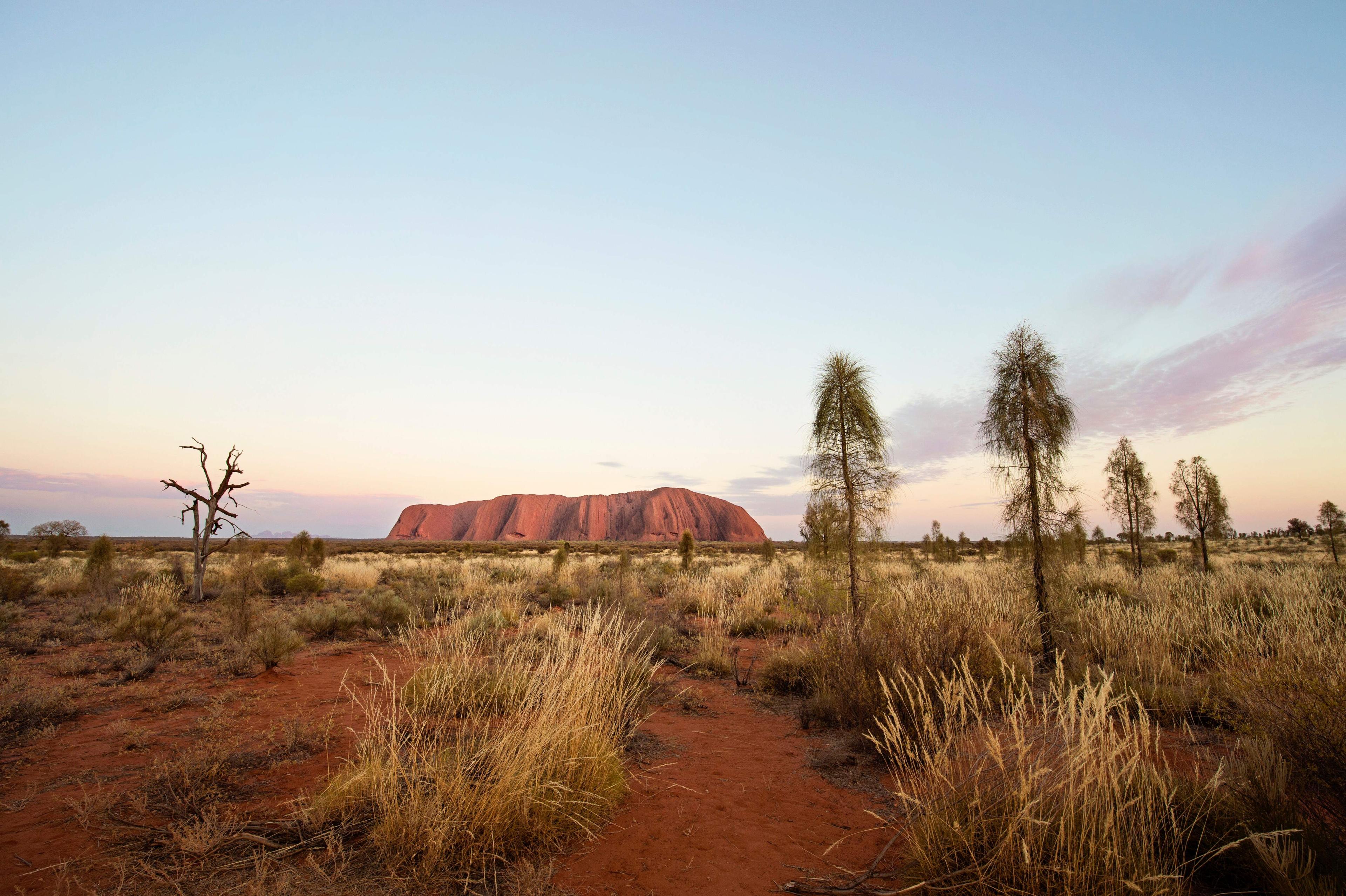
Here in the Red Centre, there’s no shortage of amazing sights, and one superstar that towers above it all — literally! Of course, we’re talking about Uluru. At 348 metres high, Uluru is taller than the Eiffel Tower. And, it takes about 3.5 hours to walk around.
And that’s only the beginning! There’s so much to learn about Uluru, and we want to help. That’s why we’ve put together this first timer’s guide to Uluru. Here, you’ll find everything you need to know about this marvelous monolith, as well as tips for making the most of your stay here in Australia’s Red Centre. So, if you’re ready to learn, let’s dive in!

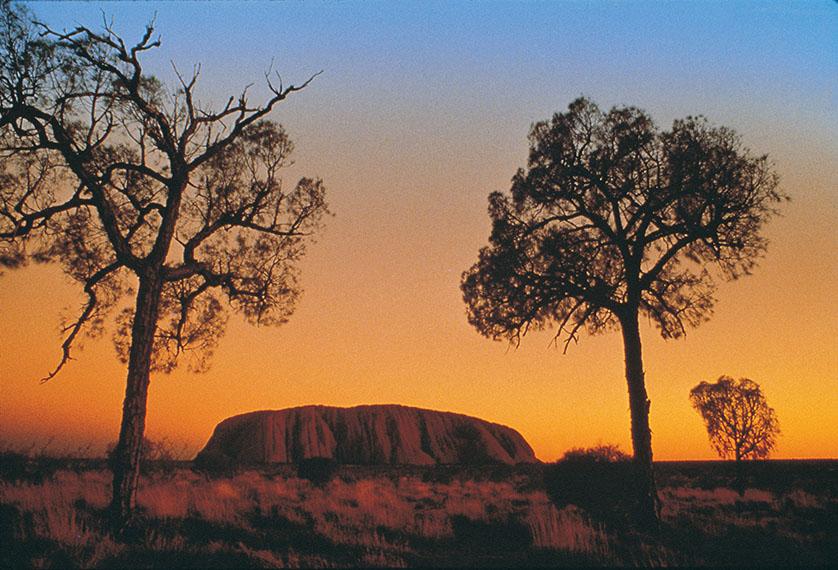
Learn the History of this Monolith
Uluru is a UNESCO World Heritage site, first listed for its natural values in 1987 and then further recognized for its cultural significance in 1994. While Uluru-Kata Tjuta National Park gained these significant statuses in the last 40 years, the monolith’s legacy dates back much further. In fact, archaeological evidence shows the Anangu, the Western Desert’s Aboriginal people, have lived in Central Australia for more than 30,000 years.
Anangu are the traditional owners of Uluru, leasing the land to the Australian Government and working with Parks Australia to jointly manage the Uluru-Kata Tjuta National Park. This formal recognition of ownership came in 1985 after more than 35 years of campaigning. Since then, major changes have taken place at Uluru. As of October 2019, visitors may no longer climb the monolith. This is excellent news, since not only is climbing Uluru dangerous, the site is also considered sacred for the Anangu.
What to Wear
If you’ve never visited the Australian Outback before, you’re probably wondering what you should pack for your adventure — especially when it comes to clothing. Ayers Rock Resort is located in a semi-arid desert, but that doesn’t mean it’s always dry and hot. Even in the summer and spring months of October through May, the temperature can be chilly in the evenings. In the winter and autumn, night time temperatures can go as low as 1°C (34°F).
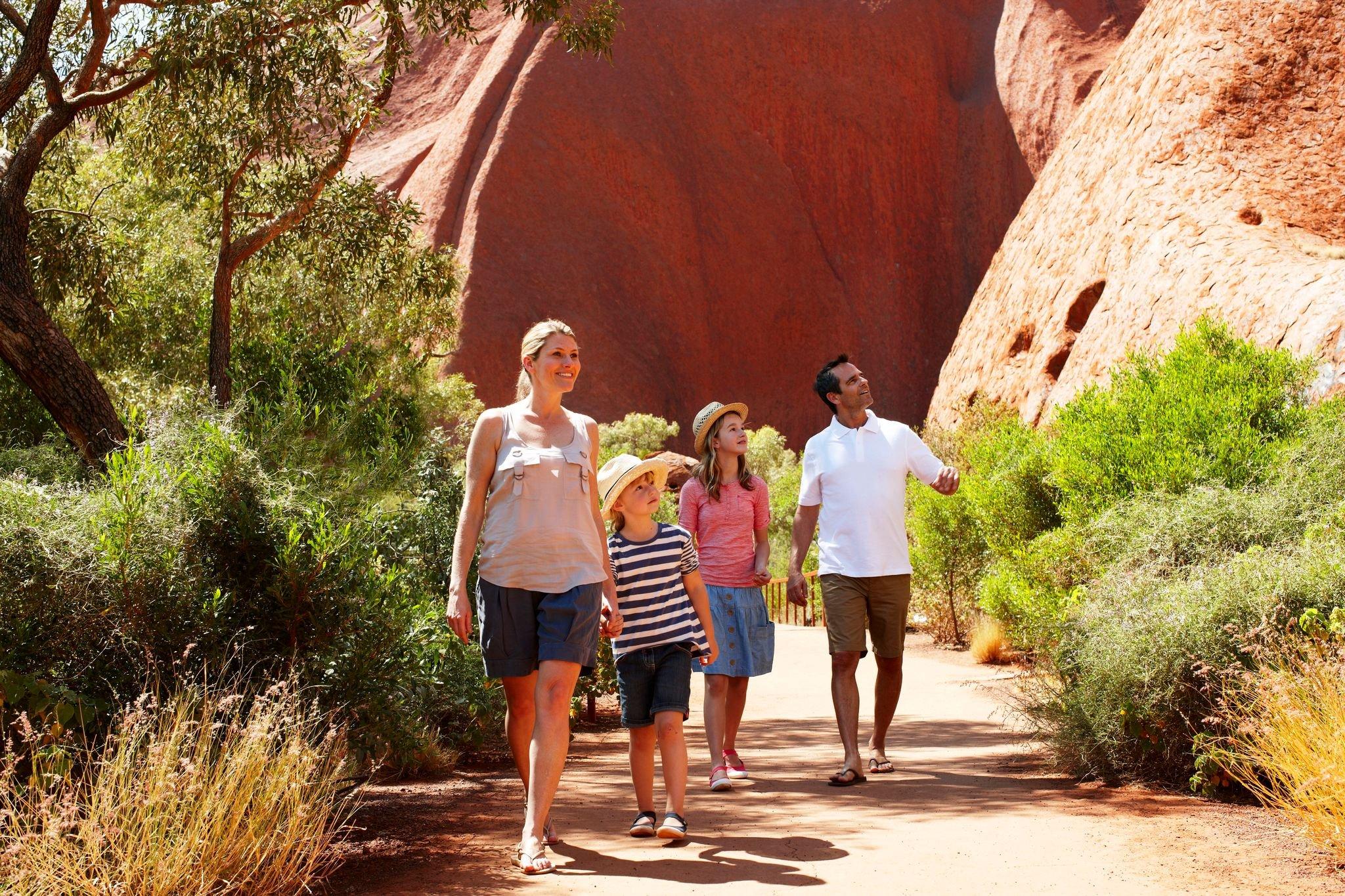

That’s why we recommend packing layers no matter the time of year, but especially if you’re experiencing Uluru on a sunrise or sunset tour. Windbreakers, light jackets, warm sweaters, and long pants are never a bad idea in the Red Centre.
Many excursions include lots of walking, so make sure you pack comfortable footwear appropriate for outdoor paths. Hiking boots and runners are recommended.
Plan a Sunset or Sunrise Adventure. Or Both!
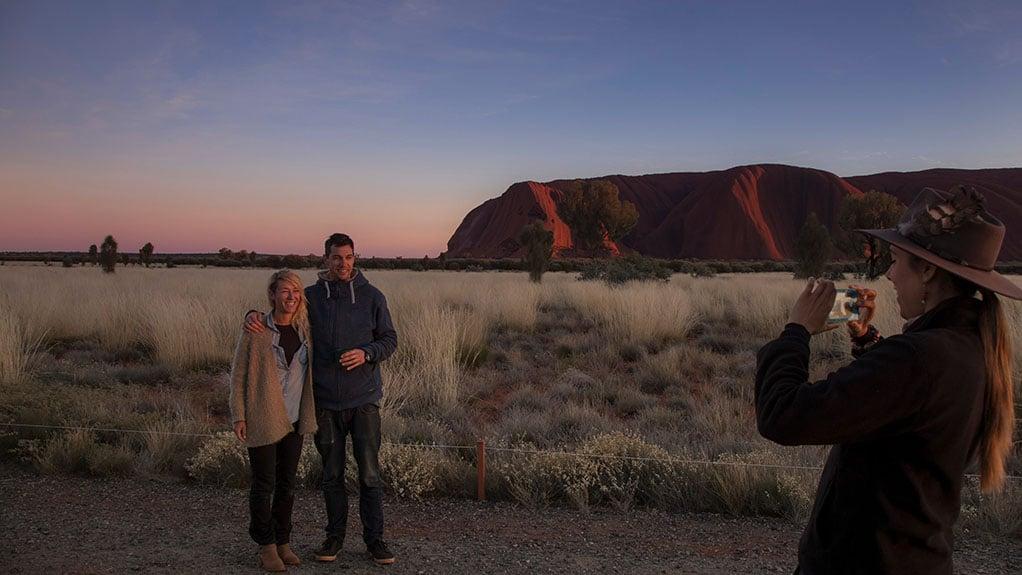

Sure, Uluru is a massive monolith, but that doesn’t mean it’s not always changing its looks! It’s bright red, but that colour changes throughout the day depending on how it’s basking in the sun. That’s why taking in Uluru on sunrise and sunset tours is an absolute must for your Australian Outback bucket list.
Desert Awakenings starts under the canopy of the stars and gives you a front-row seat to the colours of Uluru waking up. And don’t worry, you’ll enjoy the most important meal of the day, with an Aussie breakfast of bacon and egg rolls, homemade damper, coffee and tea. After the sun is up, your guided tour continues with a stop at a Mutitjulu waterhole before going to the National Park’s Cultural Centre, where you’ll learn even more about Anangu lore in great detail.
Just because the sun has set doesn’t mean the wonder in the desert takes a rest. With the Field of Light Star Pass, you’ll be transported from the Ayers Rock Resort to a remote desert location with views of Uluru. Sip on sparkling wine or beer and taste delicious outback canapes before watching a stunning art installation light up the night with 50,000 glass spheres changing colour in rhythm across the desert (all while the Australian Outback sky puts on a light show of its own).
Uluru From Above


It’s one thing to see this monolith in the desert from the ground. Take your viewing to the next level with a bird’s-eye view from a helicopter. You’ll get a real sense of its grandeur from a unique vantage point. And in addition to Uluru, this 25-minute ride provides a memorable way of seeing all 36 rock formations of Kata Tjuta.
Accommodation with a View
Want to watch a sunrise over Uluru but not leave the comfort of your cozy Queen bed in your guest room? Book your stay at Desert Gardens Hotel, the only accommodations at Ayers Rock Resort featuring rooms with a view of Uluru. After a day of Australian Outback adventures, relax by the hotel’s shady poolside, or learn more about the Red Centre’s flora and fauna with free guided walks through the hotel’s gardens.


More Adventures That Rock
Uluru isn’t the only geological wonder that brings people to Uluru-Kata Tjuta National Park. As you might have guessed from the park’s name, Kata Tjuta is the other notable attraction here. Located 30 kilometres away from Uluru, Kata Tjuta is a series of 36 sandstone domes. The name means “many heads” in the local Pitjantjatjara language.

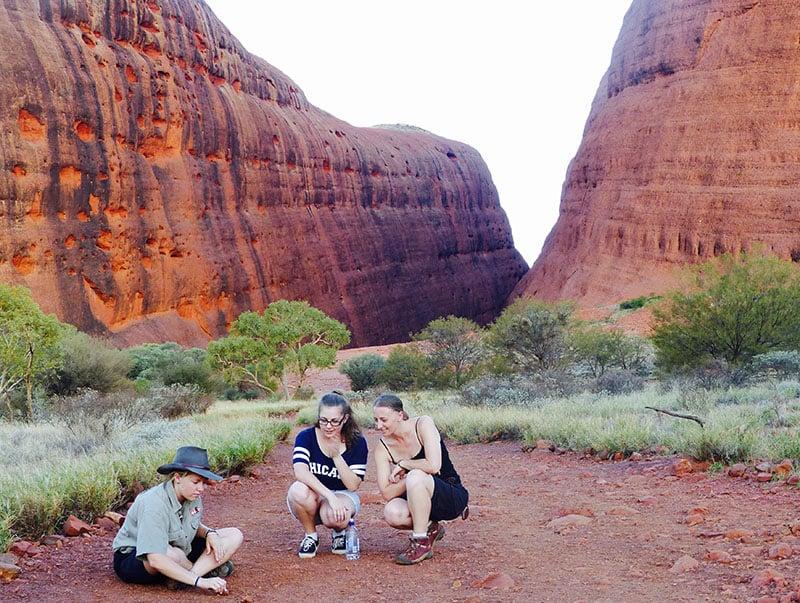
Get on Your Boots and Plan Your Red Centre Getaway
So you’ve learned the history, you’re discovered the surrounding area, and you know where to stay. There’s only one thing left to do — come see Uluru for yourself! You only get to see the monolith for the first time once, and we’re excited to see you at Ayers Rock Resort for this unforgettable holiday! Book your stay, pack your bags, and discover the best experiences Uluru has to offer.
